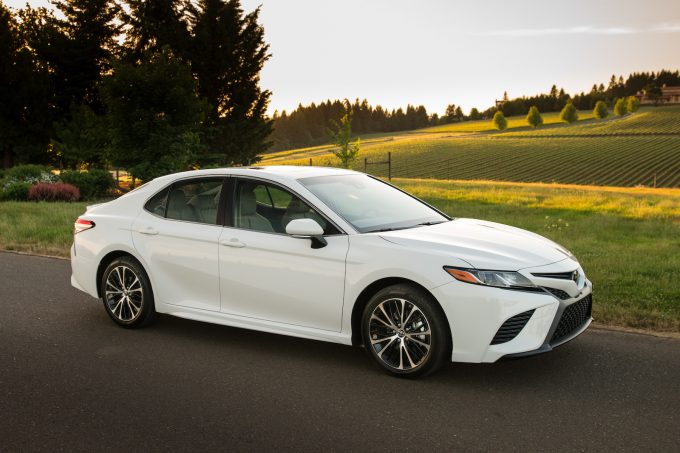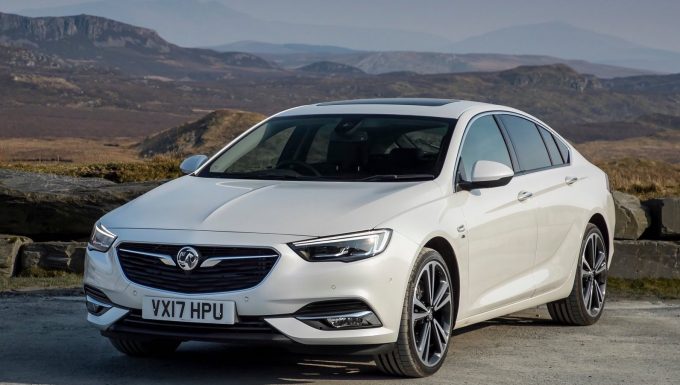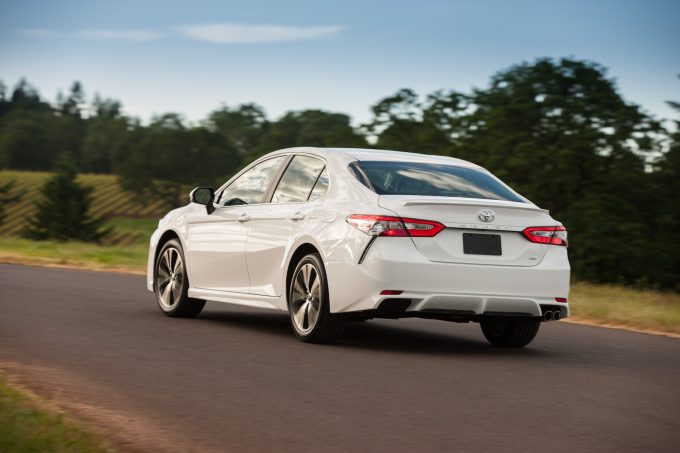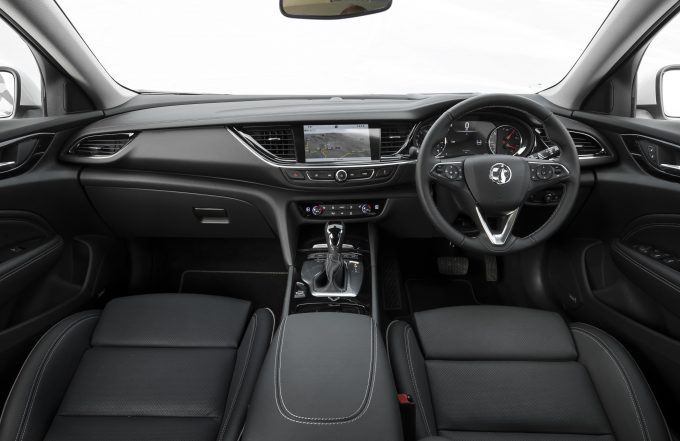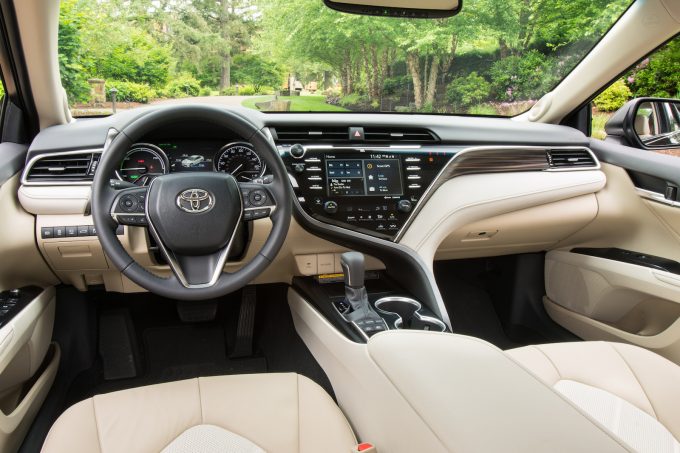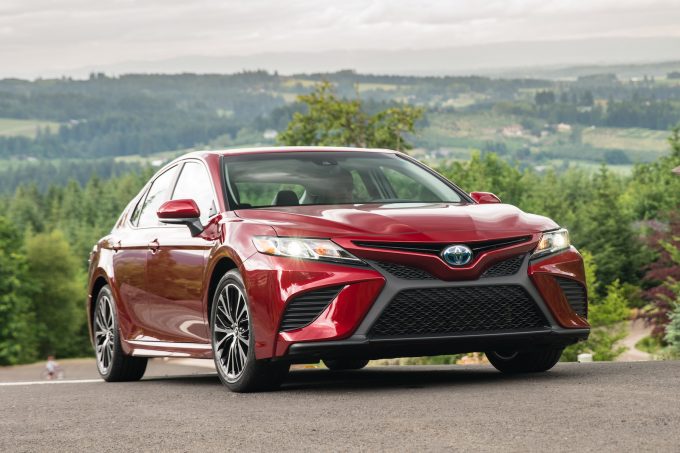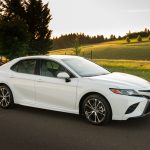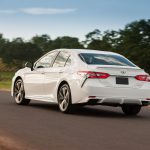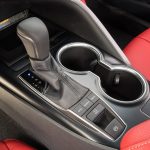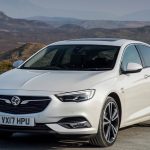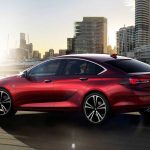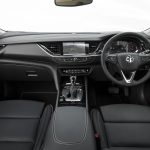2018 marks a quantum shift for the Australian car industry, in that it will be the first year with no locally-produced Toyota or Holden sedan. Instead, the Camry and Commodore will be outsourced from Japan and Germany, respectively.
It’s a difficult time for fans of muscular V8 and even V6 sedans, with many the world over shifting to four-cylinder turbo power instead. The Commodore will be the most philosophically different from its predecessor, shifting from rear-drive sedan, ute and wagon to a front and all-wheel drive hatch and wagon.
The Camry, despite switching to a new platform, carries over hybrid, four-cylinder and new V6 models – the latter taking over from the discontinued Aurion. Top10Cars decided to conduct a preliminary assessment to determine whether they will satisfy traditional big Aussie six customers. Both cars are already on sale overseas, so there is plenty of information at hand, although some of these images are based on overseas models and may differ slightly compared with the Aussie versions (Vauxhall Insignia used in some pictures, for example, although essentially an identical car).
2018 Toyota Camry vs 2018 Holden Commodore: Design
The 2018 Commodore is a radical departure from the outgoing VFII’s blistered wheel arches and masculine, confident styling. In its place is a softer, cleaner form factor but the most notable change is the new hatchback bodystyle. Unlike the Camry, it is also available in a wagon format, that includes a Subaru Outback-style Tourer version. Local specs are said to include VXR and Calais versions with different local calibrations.
The all-new Camry takes on a sportier and more organic appearance, with a black roof in sporty versions to reposition the Camry as a desirable car. The overall proportions are lower and wider, which conveys a more dynamic character – the Camry now sits on the Toyota New Global Architecture, so claims of a “sportier” Camry can be believed for the first time. While it has come leaps and bounds, it has more front and rear overhang than the Commodore and isn’t as clean. Parking them side-by-side will reveal the true victor.
2018 Toyota Camry V6 vs 2018 Holden Commodore V6: Interior
The German-sourced Commodore’s interior shares switchgear and design elements with the Astra hatchback. It gets an 8.0-inch touch-screen with Apple CarPlay and Android Auto as well as heated and cooled seats, depending on model variant. A new high-def heads-up display will be available. The overall design appears Euro-functional than sumptuous but some wheel-time will confirm this.
Toyota’s new sweeping dash kisses goodbye the archaic green LCD clock, foot-operated park brake and old design cues that have been with Toyota for decades. Dials are neat and logical, with a modern and high quality control centre and touch-screen. From pictures it looks like a special place to be that eliminates the taxi feel of today’s model.
2018 Toyota Camry V6 vs 2018 Holden Commodore V6: Performance
With V6s on the outlier of today’s new car fleet, we should be grateful that these are being offered in 2018, and hope there is a slim chance that someone like Mazda will follow suit.
The Camry V6 will use an uprated ‘2GR-FKS’ version of its 3.5-litre V6, rated at 225kW and 360Nm. The Commodore scores an ‘LGX’ 3.6-litre V6 with an impressive 230kW and 370Nm. Toyota upgrades to an eight-speed automatic, while Holden one-ups it to nine cogs.
The Camry V6 will weigh around 1605kg, and the Commodore 1641kg – thanks mainly to its complex and clever all-wheel drive system. The Camry will be a front-drive only proposition in Australia.
As for towing, the current VFII V6 Commodore has a braked rating of 2100kg. European Insignia equivalents have a rating of 1600kg. It’s unknown if Holden will seek to increase this for the V6-engined Commodore. The outgoing Toyota Aurion V6 was rated to 1600kg, so this is a safe bet for the new Camry V6.
Both cars should easily achieve a flat 6.0-second 0-100km/h time, or quicker. As the Camry has a 36kg advantage and the 2GR engine is known as a freak, we would expect it could potentially be the quicker car. But there would not be much in it and we reserve judgement until we get the opportunity to perform instrumented testing. It’s also worth noting the new Camry is 50kg heavier than its predecessor.
2018 Toyota Camry V6 vs 2018 Holden Commodore V6: Efficiency
Holden is aiming for the 8.0L/100km mark with its entry petrol turbo 2.0-litre and 5.5L/100km for the optional turbo-diesel with 125kW and 400Nm. The company is keeping mum on V6 fuel consumption figures for now, but the outgoing VFII SV6 manages 9.0L/100km. We would expect the new car’s result to lie somewhere in between 8 and 9.
The Camry Hybrid is expected to improve dramatically to 4.5L/100km, but the V6 should bring the Aurion’s 9.3L/100km figure to a flat 9, or slightly better.
2018 Toyota Camry V6 vs 2018 Holden Commodore V6: Handling
Camry’s new TNGA chassis means a lower centre of gravity, better suspension geometry front and rear for less steering kickback that was impossible to disguise in the Aurion, despite talented local engineers pulling every trick in the book. A more rigid chassis and new rear double wishbone setup should all-but eliminate torque-steer and make the Camry a more nimble and accurate car.
The Holden’s all-wheel drive system with its GKN ‘Twinster’ rear differential will apparently be configured for very mild oversteer, which should keep rear-wheel drive fans satisfied. The previous version of the donor car, the Insignia VXR, possessed extraordinary levels of balance and grip, so while the Camry is shaping up to be a very enjoyable car and a much better drive than its forebear, all the aces are lining up in Holden’s favour here.
2018 Toyota Camry V6 vs 2018 Holden Commodore V6: Conclusion
So this is what the legendary big Aussie six battle has become. Many have come and gone over the years – Austin, Leyland, Valiant, Cressida, Avalon, Aurion, Magna, Falcon, to name a few – but the last two are two imported cars with local tuning. They themselves are endangered species so we should cherish them while they last.
Despite competing in a declining segment, both have the odds stacked in their favour when it comes to sales. Toyota has an unmatchable reputation for reliability and customer retention. Low service costs are part of a package that is hard to beat.
Holden’s chassis-tuning expertise and marketing clout could see this Commodore gamble pay off, but former SS customers may feel a sting and look elsewhere for their thrills (cough… Kia Stinger… cough).

